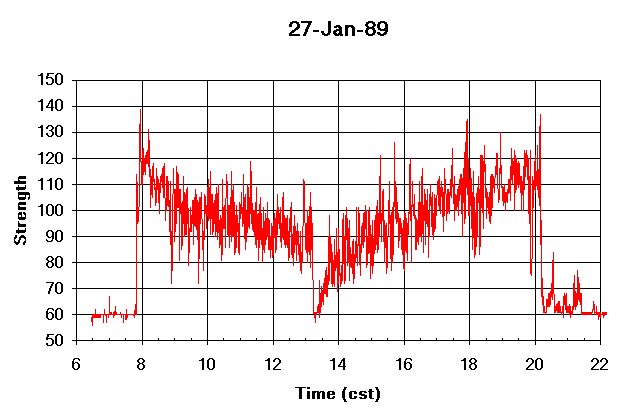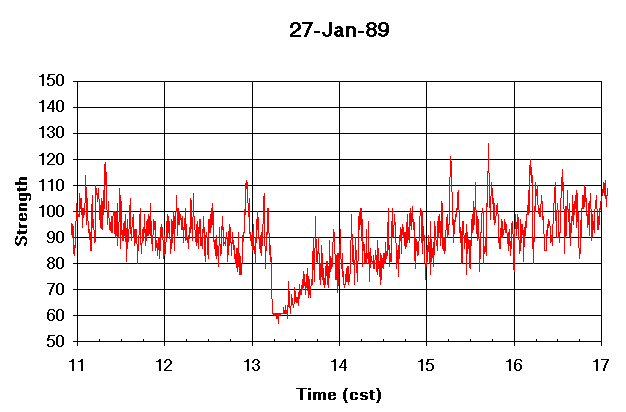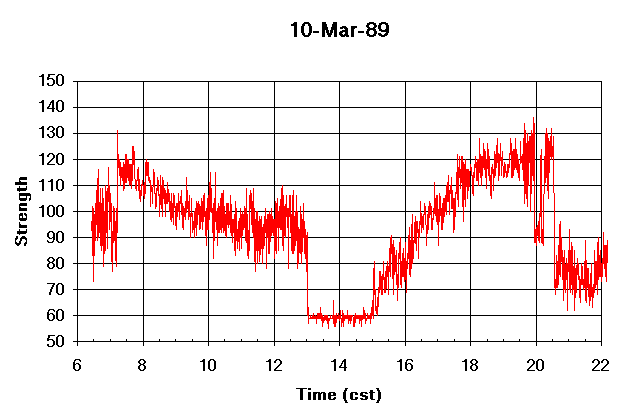

The above detail shows more clearly the sudden drop followed be a rise back to the former signal level. This was a pretty typical flare, strong but not truly large. Another example of a typical flare comes from the record of 06 January, 1989. The winter and spring of 1989 was a very active period for flares and I caught them repeatedly on many records as the map for December 89 / January 90 shows. On the 10th of March, 1989 there occured a truly powerful outburst which blocked radio communications for several hours and the geomagnetic storm that followed three days later was so severe that it knocked out the power grid in Quebec, Canada, and caused wonderful auroral displays as far south as florida.

See �http://www.ips.oz.au/background/richard/power_1989.shtmll� for a description of the event and its effects in Quebec.
Next: Unsettled to active field responce..
Return to contents..